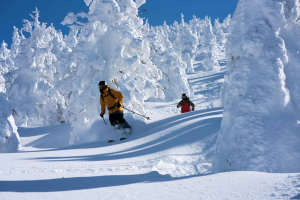Hokkaido: Culture Rich and Wild Adventures in Japan’s Northern Frontier

Mountainwatch | Nadine Robb
The magic of Japan lies within its diversity, and the wholly different experiences that you’ll encounter across of each of its 47 prefectures. As the most northerly and sparsely populated of them all, Hokkaido stands apart, geographically, but also in the depth of adventure to be discovered.
Though well known and loved as an international powder destination (for good reason), many rocks remain unturned in its wild north, interior and outer edges; places rich in food, culture and deep powder skiing.
It has never been easier to reach Hokkaido, with Qantas Airline – among other carriers – hoping to resume direct flights into New Chitose Airport, just an hour’s drive from the prefectural capital of Sapporo. For current information on routes and flights, please see their website at qantas.com As a true snow city in every sense, the lively downtown streets are lined with metre-high snow piles, as bulldozers battle the unrelenting snowfall to keep the roads clear. Towering buildings, neon signs and a sensory overload of Kanji-covered walls won’t let you forget that you’re in Japan, while the anime-wrapped street cars will bring the familiar “only in Japan” smile to your face.
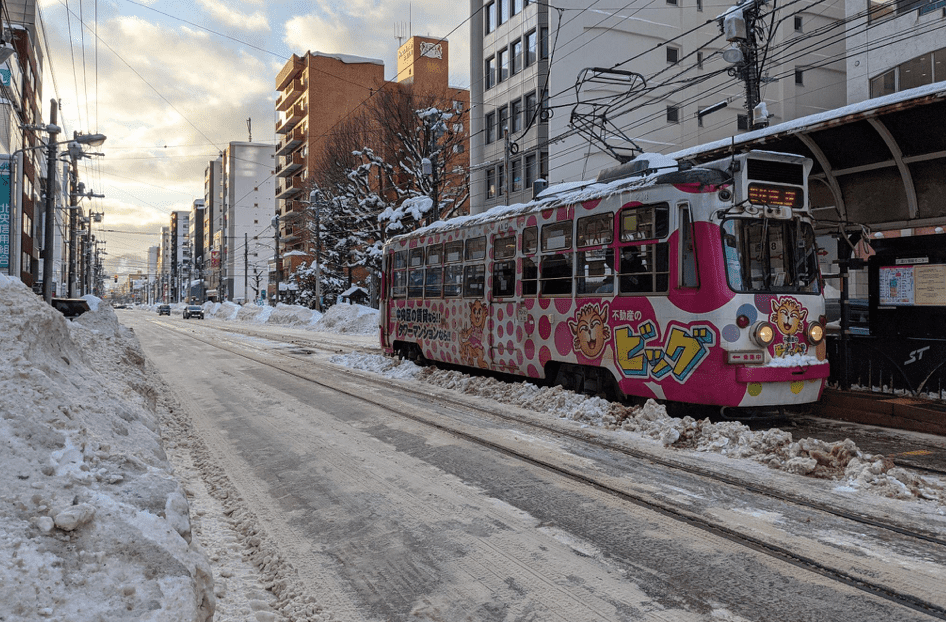
Mountains beckon beyond the downtown area, forever reminding that it is a snow destination as much as it is a city, while Odori Park offers pockets of peaceful reprieve in the heart of the urban centre. Each year during February, Odori Park is home to the world-famous Sapporo Snow Festival, and the observation deck of Sapporo TV Tower is an easy, inexpensive way to get to know the city from above street level; 90 metres above to be exact. As a region high in geothermal activity, there is no shortage of onsen (hot spring) experiences throughout the city – which feel especially soothing after a day on the slopes.
Being so close to the Sea of Japan and the handfuls of multi-generational fishing villages that decorate its coastline, the food culture in Sapporo, and indeed all of Hokkaido,is excellent. Famous for fresh catches and masterful cuts, the seafood is arguably some of the best in Japan and is plentiful throughout the city. “Jingisukan” – which is mutton strips that sizzle on your table top hot plate – is a delicacy borne of Hokkaido, and as the nation’s leading prefecture for agriculture, it stands to reason that the flavours are both deep and delicious. Another dish synonymous with Sapporo is ramen – so much so that an entire side street has been dedicated to it (though of course, it can also be found throughout the city). Though ramen is found across Japan, miso-based broth ramen originated in Sapporo, making the dish an intrinsic part of the city’s famous food culture. In short, if you are a foodie, do not skip Sapporo.
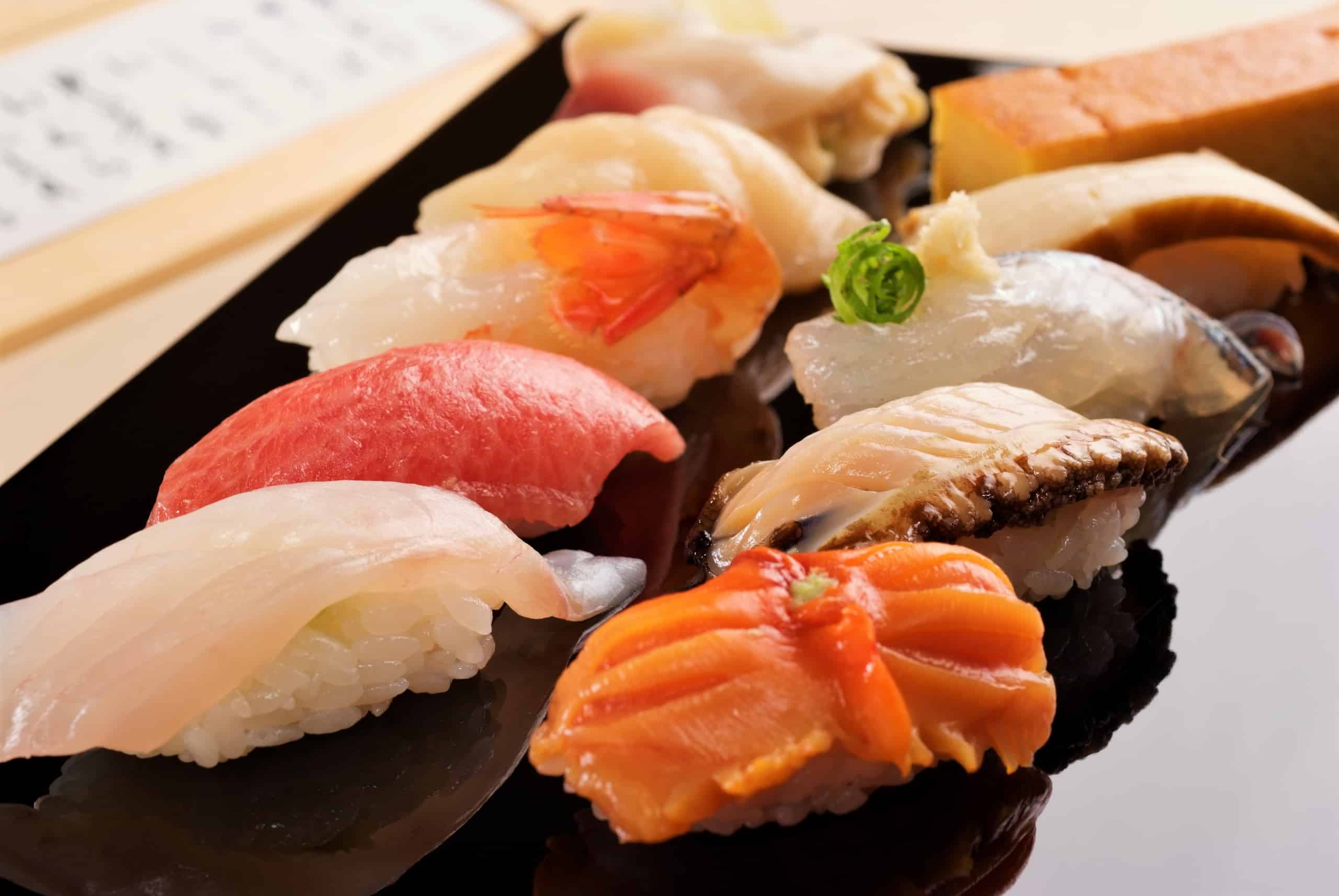
Surrounded by mountains and coastline, there are a handful of close “day trip-able” ski resorts just outside of the city proper – one of which is Sapporo Teine Ski Resort. Just a 45-minute drive from the downtown area, this medium-sized ski resort has a great balance of well groomed, wide open cruisers, and steep side and slack-country playgrounds. Split over two areas (Sapporo Teine Highland and Sapporo Teine Olympia, so named for its part played in the 1972 Sapporo Olympic Games), advanced skiers will gravitate to Highland for its short but steep lines in frequently bottomless powder. And while many international tourists may be drawn to the better-known Niseko, Teine typically holds its fresh tracks for a while longer. It’s north-facing aspect and proximity to the Sea of Japan sees that the snow remains cold, light and dry, while the views from the top of Highland are incredible. Standing 1000 metres above sea level, you can cast your eyes over sea and city, before descending into the fluffy goodness.
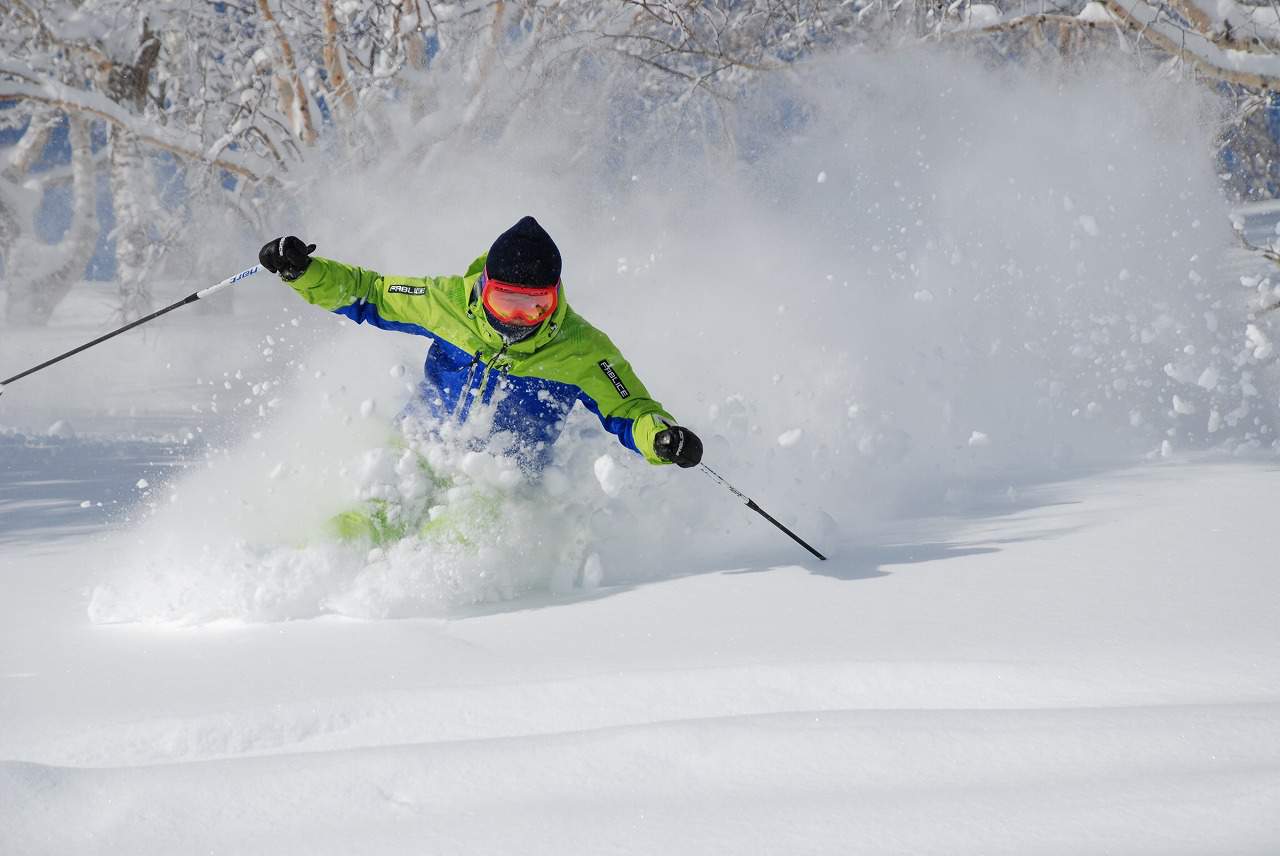
Not only reserved for advanced or aspiring powder skiers, Teine Olympia has dialed its family friendly facilities, with newly upgraded lifts and buildings, a large beginner area and a kid’s park – making it the perfect all-round resort just a stone’s throw from Sapporo.
As we move towards the interior of Hokkaido, the temperatures typically drop, and the snow subsequently becomes lighter and drier still, though perhaps with slightly less precipitation. As the regional hub, the city of Asahikawa is the perfect base for bigger backcountry adventures and is in itself another special snow city in Japan’s far north. With its own airport serviced by direct flights from Tokyo (an easy 1.5 hours airtime), and a smooth transportation system from Sapporo – it is easy to build Asahikawa into any ski tour of Hokkaido.
An hour outside of the city is Mt Asahidake. Marking the centre and as the island’s tallest mountain, Asahidake is an active stratovolcano that stands 2291 metres above sea level. As part of a larger chain of mountains that form the Daisetsuzan National Park, this particular one arguably boasts some of the most interesting backcountry terrain in Hokkaido. It is not a conventional ski resort in the sense that it has just one lift – a 100-person Ropeway that’ll see you to the summit in 10 minutes – and just two green runs that feed back to the base building. Though it is clear that this facility was originally built with summer hikers in mind and not for winter recreation, don’t let the lack of infrastructure fool you. The rest of the mountain, which is significant in size, is an ungroomed and unrestricted backcountry powder paradise, with some sections that would challenge the title of steepest skiable terrain found in Hokkaido; specifically, the Bannosawa and Ura-ban zones to the far skier’s left.
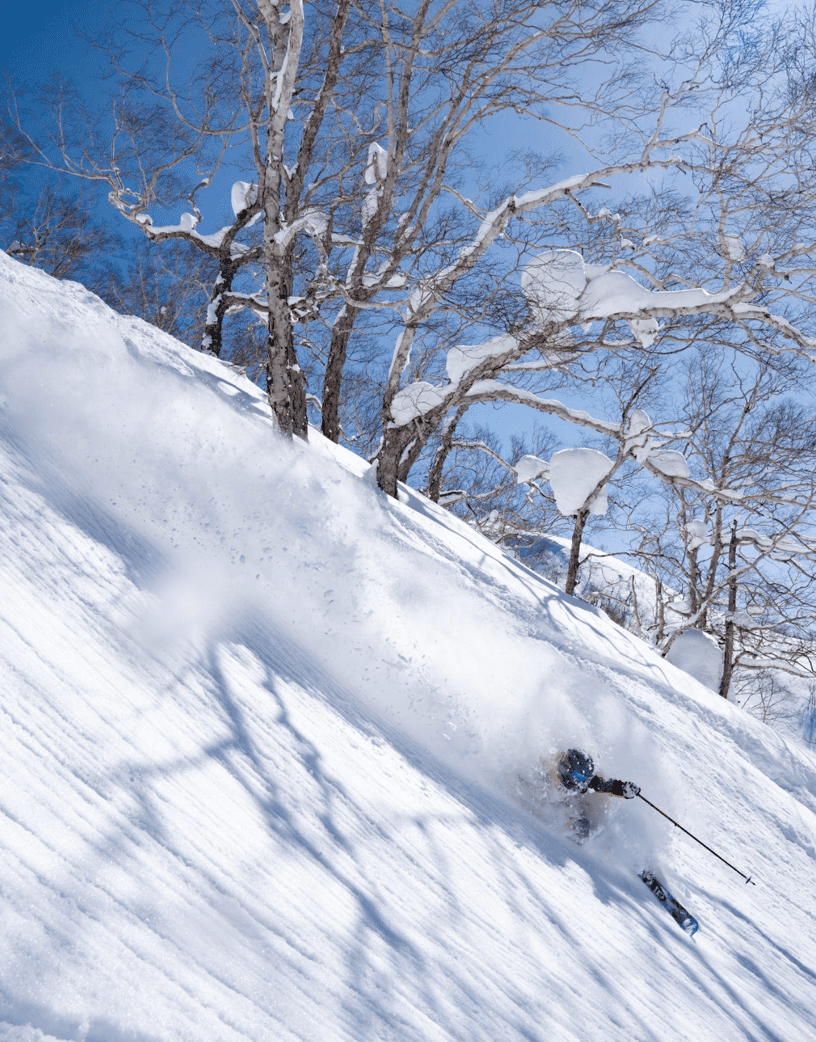
And for those keen for a more serious ski mountaineering adventure, a 700-metre hike (with the assistance of crampons and ice tools), will bring you to the summit of Mt Asahidake, opening up a plethora of possible descents. But don’t expect powder on the upper sections, as fierce winds and the unprotected nature of this standalone strato often leave the caldera icy and demanding of mountaineering expertise. And, as always, be sure to hire a qualified, local guide when venturing into the backcountry, as fatalities do occur. The ever changing solar exposure and strong winds create instabilities in the snow pack, and the weather can change very quickly.
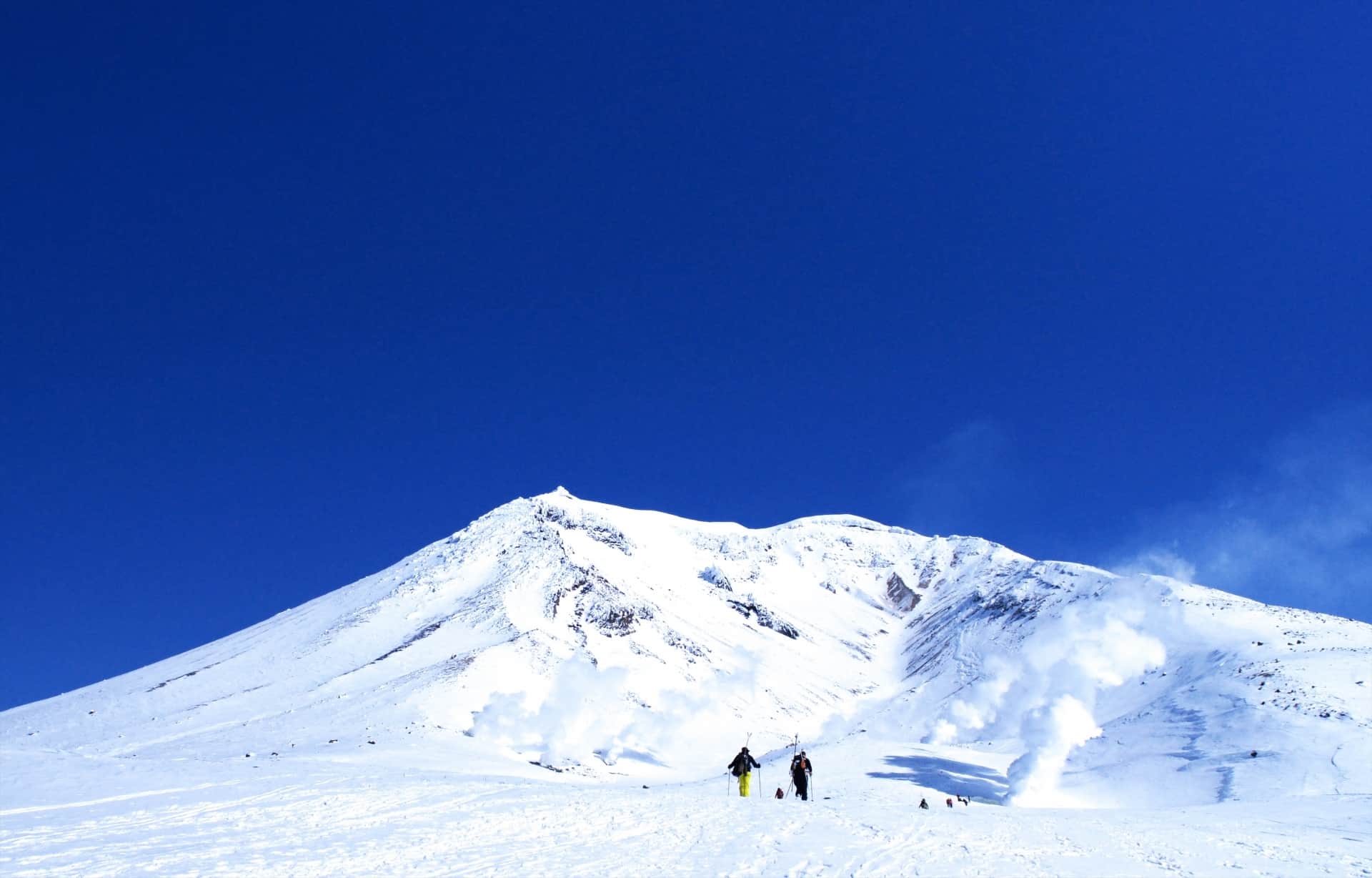
On the other side of the same mountain complex is Kurodake Ski Resort. Another great choice for off piste and backcountry skiers, this one lift / two partly groomed run resort provides access to a network of sprawling lines on numerous different aspects. As the earliest resort to open with all-natural snow in Japan, you won’t have to roll the dice with snow conditions.
Departing the heart of Hokkaido’s main island and heading further north, is the remote volcanic island of Rishiri. Rugged, raw and reminiscent of Alaska’s Aleutian Islands, Rishiri is part of the Rishiri-Rebun Sarobetsu National Park, offering some of the wildest backcountry adventures in the country: so much so that the Japanese Himalayan climbing teams train on Rishiri. A quick Google Image search will be enough to whet your appetite, as the extinct volcano stretches 1721 metres out of the sea to its summit. With multiple peaks, and kinks and creases across its flanks, the skiable terrain is full of fun features – both in the alpine and at tree line – with numerous gullies, chutes and spine lines to be challenged.
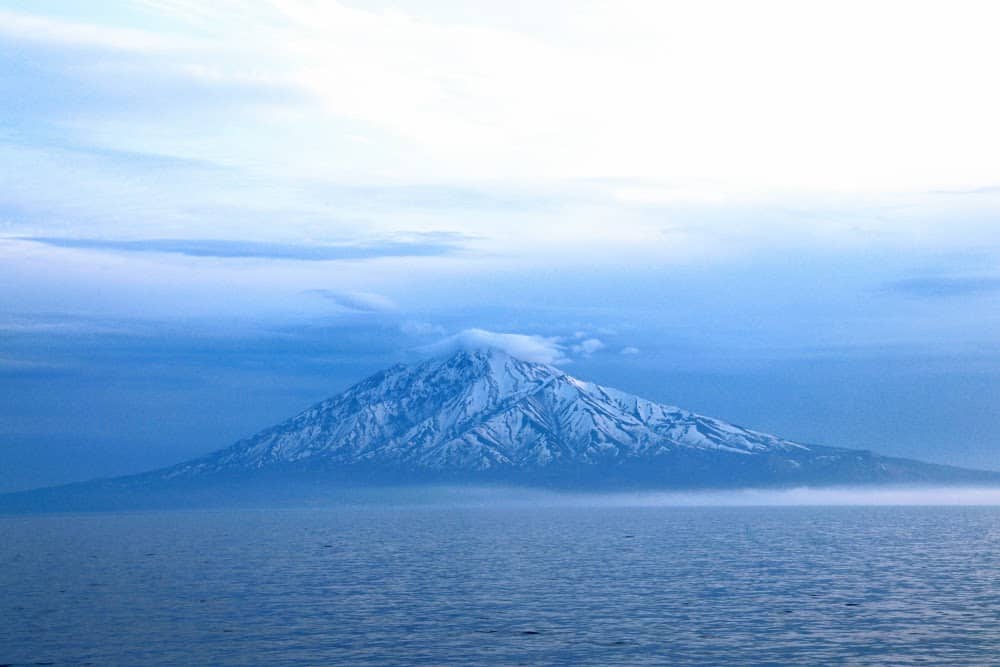
Being that much closer to both the Sea of Japan and Siberia (the magic formula that creates Japan’s coveted powder snow), the snowfall here is even deeper, drier and more consistent than that on the main island. And, rare though it is during the winter, when blue does grace the skies and you are able to grasp the scale of your surroundings, fewer things in life will beat the steep, deep, summit to sea ride.
You don’t have to dig deep to find unadulterated adventure in Hokkaido, and with easy transportation systems and direct flights in place – there is no need to choose just one destination. Bringing together the very best of the country’s cuisine, culture and big mountain experiences, it is worth spending a few weeks getting to know Japan’s wild north.
http://hokkaidolove.jp/en/snowactivities/




